Instagram has hit 2 billion monthly active users: - **This means that about half the total population** of internet users are currently on Instagram. These tips can help you identify those most relevant to your product. - **What font do you use most
Instagram has hit 2 billion monthly active users:
-
This means that about half the total population of internet users are currently on Instagram. These tips can help you identify those most relevant to your product.
-
What font do you use most in your marketing materials? Check out this font pairing style guide, complete with holiday cocktail recipes, for some festive suggestions!
-
Founder Jacob Engels hit $2,000 monthly with Paperless, his document automation tool. Here's how he combined LinkedIn outreach and email automation to hone a killer acquisition strategy.
Want to share something with nearly 85,000 indie hackers? Submit a section for us to include in a future newsletter. —Channing
📱 Instagram's 2B User Milestone
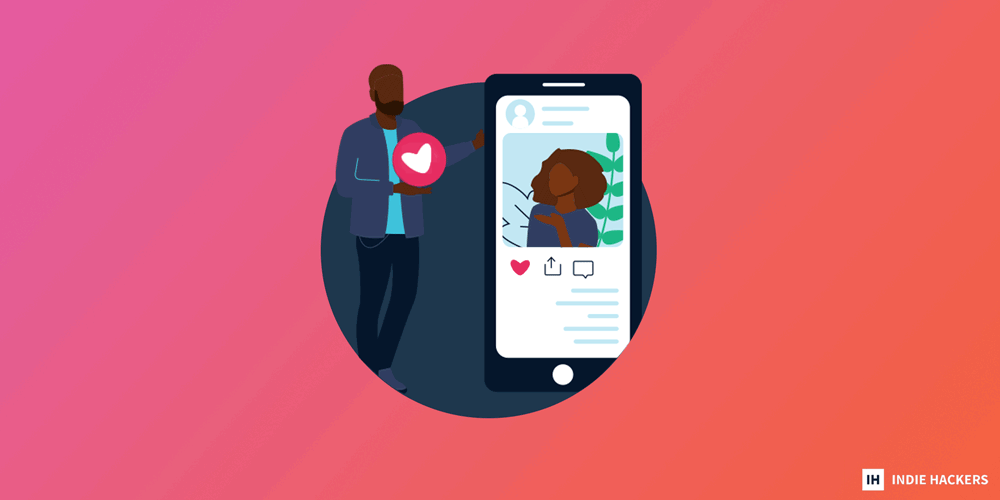
from the Growth & Acquisition Channels newsletter by Darko
According to a recent CNBC article, Instagram has hit 2B monthly active users. The sources are anonymous Instagram employees. Here's how you can strengthen your IG presence!
Instagram's milestone
The news: Instagram has hit 2B monthly active users, according to anonymous Instagram employees. Instagram reached this figure about a week before Facebook changed its name to Meta around mid-October.
The opportunity: Nearly half of the population of total internet users are now on Instagram. There's a decent chance that a portion of your target market is also there. Here's one approach to identify them: Go to SparkToro and enter some keywords relevant to your niche. Note the social accounts that people who use those keywords engage with. Are any of them on Instagram? If so, do they have a decent amount of followers?
If you answered yes to both questions, Instagram is most likely a channel worth considering.
Podcast ads
The news: The Verge published an article about how various companies are using podcast ads to their advantage.
One example: Fume is a smoking cessation device. The company went from spending $3K per month on podcast ads at the beginning of this year, to between $25K-$35K by the end. The Verge's article focuses on how big brands are increasingly entering the podcast ads space, and how that makes things hard for smaller players.
If you're familiar with The Law of Sh*tty Clickthroughs, your reaction to this will probably be "duh!" When more people start to use an acquisition channel, it's a good sign that the channel is working.
The opportunity: Podcast ads work. You can also track their performance using coupon codes. The Verge article outlined several difficulties that new podcast advertisers are facing. To make sure that you don't face the same, try to:
- Work directly with podcasters so that your ad stays up as long as the show is live.
- Do more research to your find niche and identify up-and-coming podcasters that aren't yet charging a ton.
- If you start getting a postive ROI, sign a contract to avoid getting hit with unexpected price hikes like some of the businesses mentioned in the article.
TikTok keeps growing
The news: Cloudflare recently published an article of the most popular domains of 2021. The most popular domain? TikTok. Google came in second. Let that sink in.
Back in 2020, TikTok ranked number seven. Another major market research company predicted that TikTok will rank as the third largest social network in 2022. Instagram already ranks second, with 2B users. Facebook is first, with 2.91B users.
The opportunity: As TikTok keep growing, more influencers will appear in digital niches that indie hackers target. This is already happening in markets that target developers, marketers, and niche designers (like logo designers).
This trend will likely continue in 2022, as we'll see more influencers in B2B or B2P (business-to-profession) niches. This means that TikTok will become an increasingly viable acquisition channel for SaaS founders.
Which acquisition channel has worked best for you? Share below!
Discuss this story, or subscribe to Growth & Acquisition Channels for more.
📰 In the News

from the Volv newsletter by Priyanka Vazirani
🙅♀️ Americans distrust Facebook, TikTok, and Instagram with their data.
👋 OnlyFans' founder-CEO is stepping down.
📉 Some venture capitalists are forecasting a downturn in the near future.
🛢 The world may consume more oil in 2022 than ever before.
🎅 A baby on Santa's lap signed "Help!" in a viral Christmas photo.
Check out Volv for more 9-second news digests.
🥃 2021 Holiday Font Pairing Style Guide
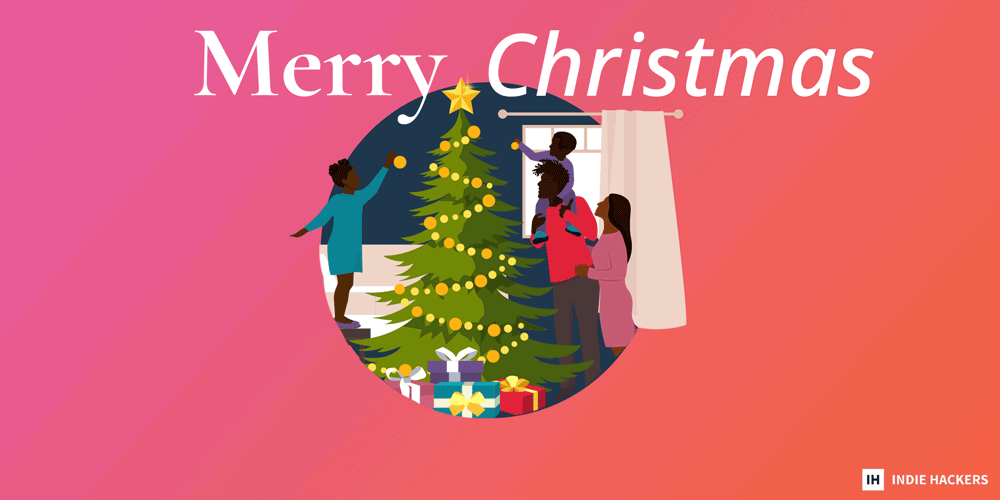
from the Font Discovery newsletter by Hua Shu
Hi everyone! I'm Hua, a designer and bootstrapping founder building Typogram, a brand design tool. As part of running Typogram, I create this digestible weekly guide with fonts, colors, and design ideas to help founders step up their marketing game and get creative!
Read on for a special holiday edition featuring a font pairing style guide and holiday cocktail recipes!
2021 holiday font pairing style guide
Classic and traditional fonts:
Cormorant Garamond and Noto Sans:
- Logo font: Cormorant Garamond Bold.
- Display font: Cormorant Garamond.
- Body font: Noto Sans.
Mulled wine is a classy, traditional drink that dates back to the second century. Romans heated wine during the winter to keep themselves warm.
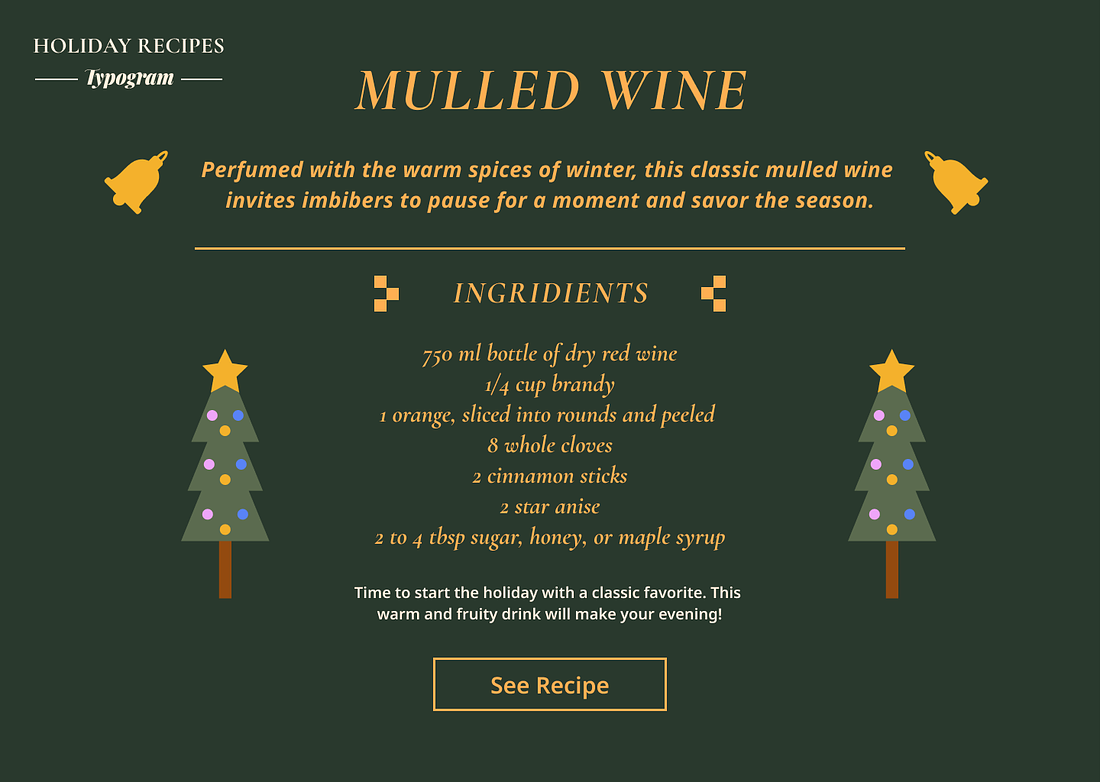

How to make this drink:
- Combine ingredients. Add wine, brandy, orange slices, cloves, cinnamon, star anise, and two tablespoons of sweetener to a large saucepan.
- Stir briefly to combine.
- Cook the mulled wine on medium-high heat until it just barely reaches a simmer. Reduce heat to low, cover, and let the wine simmer for at least 15 minutes, or up to three hours.
- Using a fine mesh strainer, remove and discard the orange slices, cloves, cinnamon sticks, and star anise. Give the mulled wine a taste, and stir in extra sweetener if needed. Here's the original recipe.
Crafty and fun fonts:
Oregano and Roboto:
- Logo font: Oregano Italic.
- Display font: Oregano.
- Body font: Roboto.
Holiday Punch is full of citrusy, fruity flavors. The organic, brushy feeling of Oregano matches the citrusy flavorful quality of this delicious drink. The natural, calligraphic feelings of Roboto match the brushiness of Oregano really well.
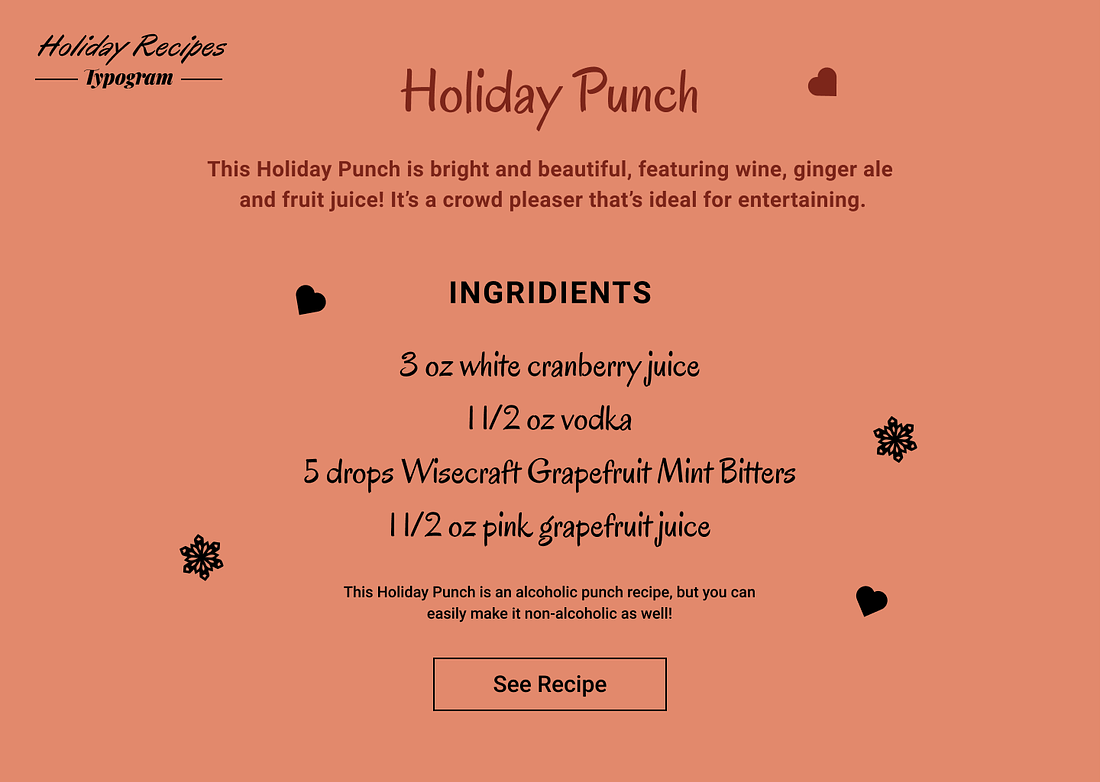
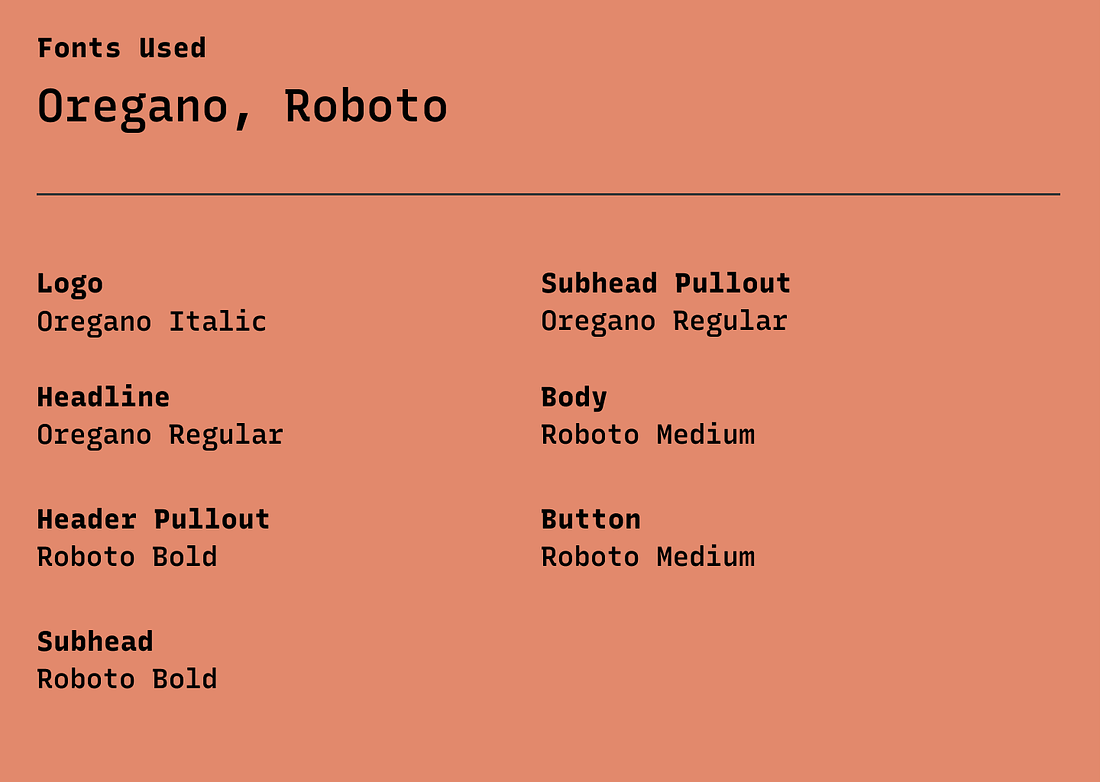
How to make this drink:
- Chill all liquids. Just before serving, combine the sparkling wine or white wine, ginger ale, Cointreau, and pineapple juice in a large punch bowl.
- Top with the orange wheels, lemon wheels, raspberries or cranberries, and herbs as a garnish. Bubbles dissipate after about 20 minutes, so it’s best served immediately (but still tastes great without bubbles). Here's the original recipe.
Sci-fi future fonts:
Orbitron and Dosis:
- Logo font: Orbitron Bold.
- Display font: Orbitron.
- Body font: Dosis.
Orbitron and Dosis are used to create this font pairing palette. Galaxy Cocktail is a space-themed drink with a mysterious purple gradient. The boxy characteristic of the Orbitron, along with the geometric quality of Dosis, communicates a futuristic vibe that perfectly expresses the vibe of this drink.


How to make this drink:
- Chill all ingredients for two hours.
- Add all chilled ingredients to a cocktail shaker.
- Shake mixture then strain into a martini glass.
Here's the original recipe.
Soft and airy fonts:
Averia and Space Grotesque:
- Logo font: Averia Libre Gruesa.
- Display font: Averia Libre Gruesa and Averia Sans Libre.
- Body font: Space Grotesque.
The uneven strokes of Averia Libre Gruesa and Averia Libre Sans communicate a softness and airiness tone, perfect for a refreshing drink like Winter Sea Breeze.
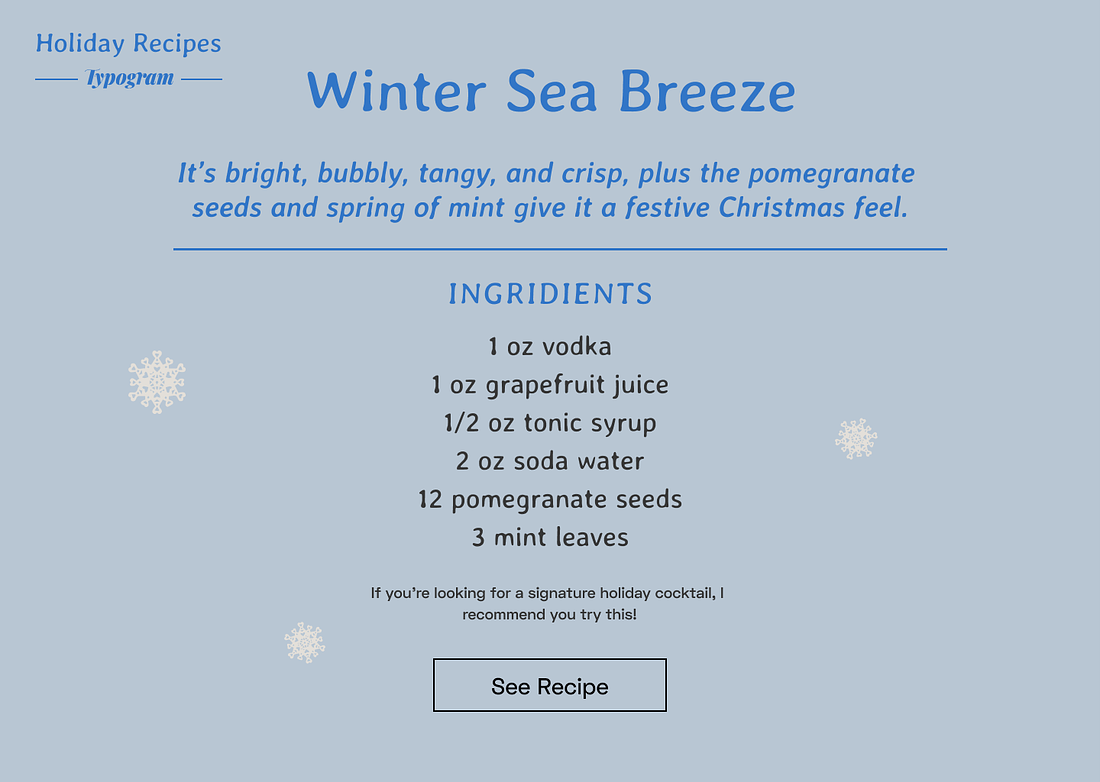
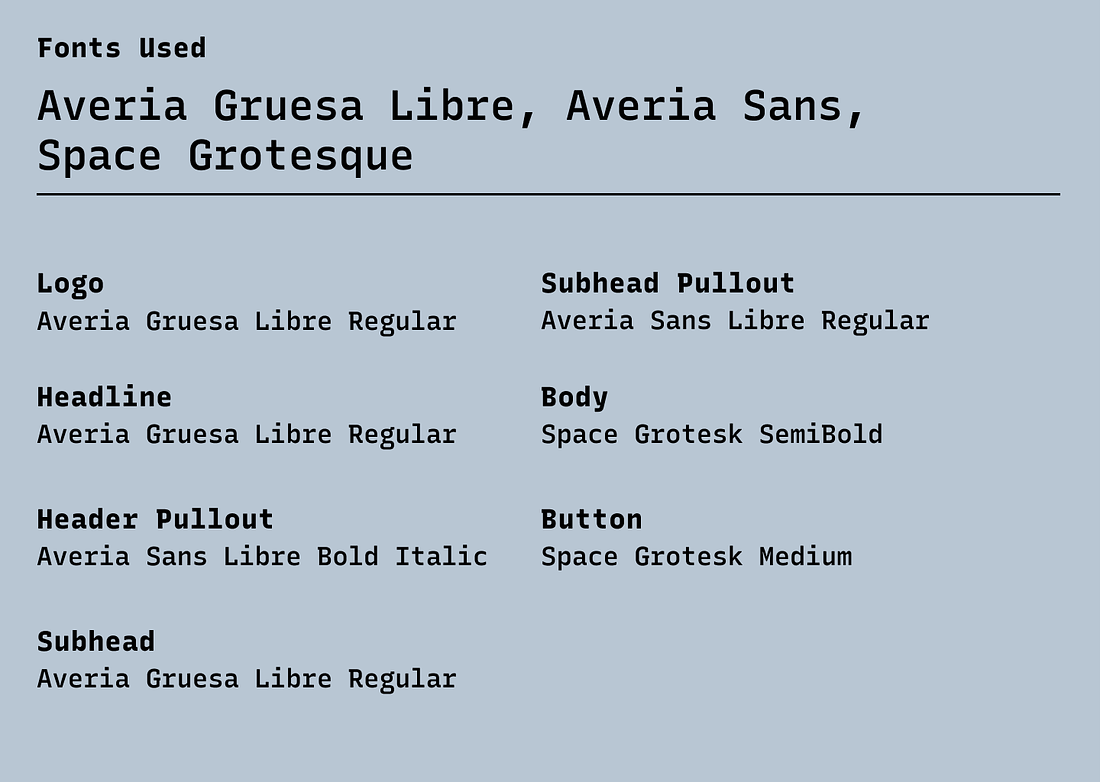
How to make this drink:
- Fill your glass 3/4 full with ice. A lowball glass is a perfect size.
- Add the vodka, grapefruit juice, and tonic syrup. Stir.
- Pour in the soda water and garnish with the pomegranate seeds and mint leaves.
Here's the original recipe.
Warm and nostalgic fonts:
Enriqueta and IBM Plex Sans:
- Logo font: Enriqueta SemiBold.
- Display font : Enriqueta.
- Body font: IBM Plex Sans.
The bold strokes of serif Enriqueta, along with IBM Plex Sans, gives this a warm, comforting, and nostalgic vibe. It's perfect for a coffee-themed holiday drink!
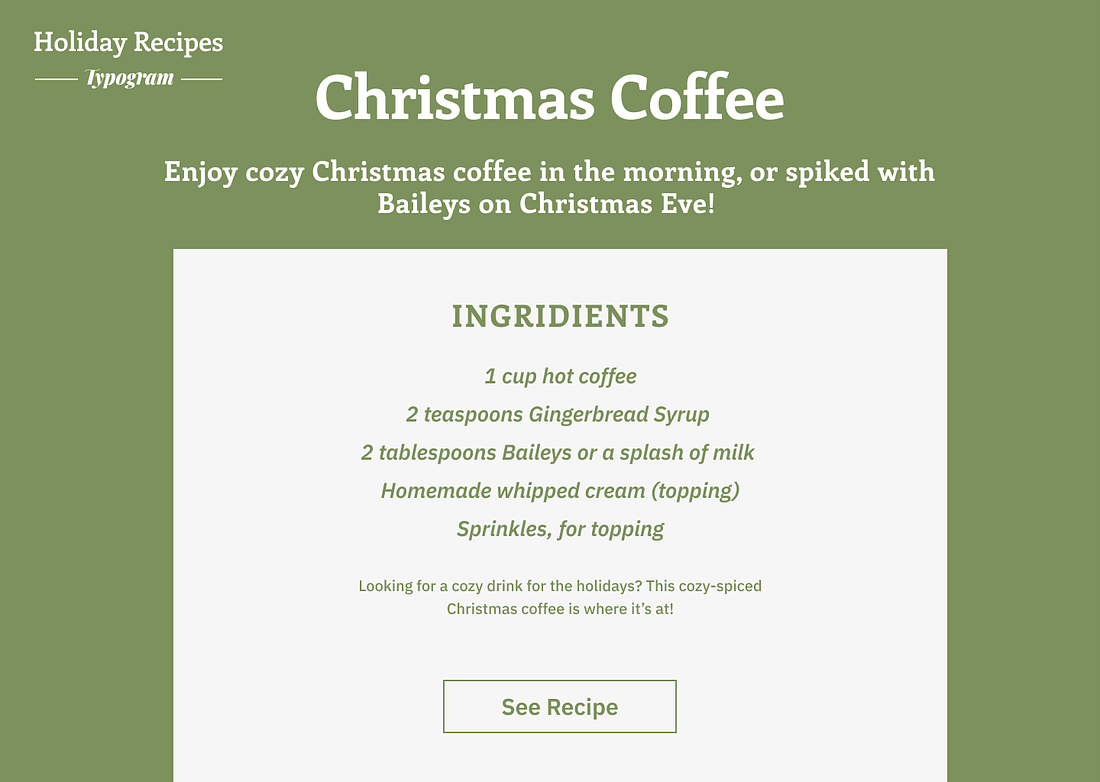
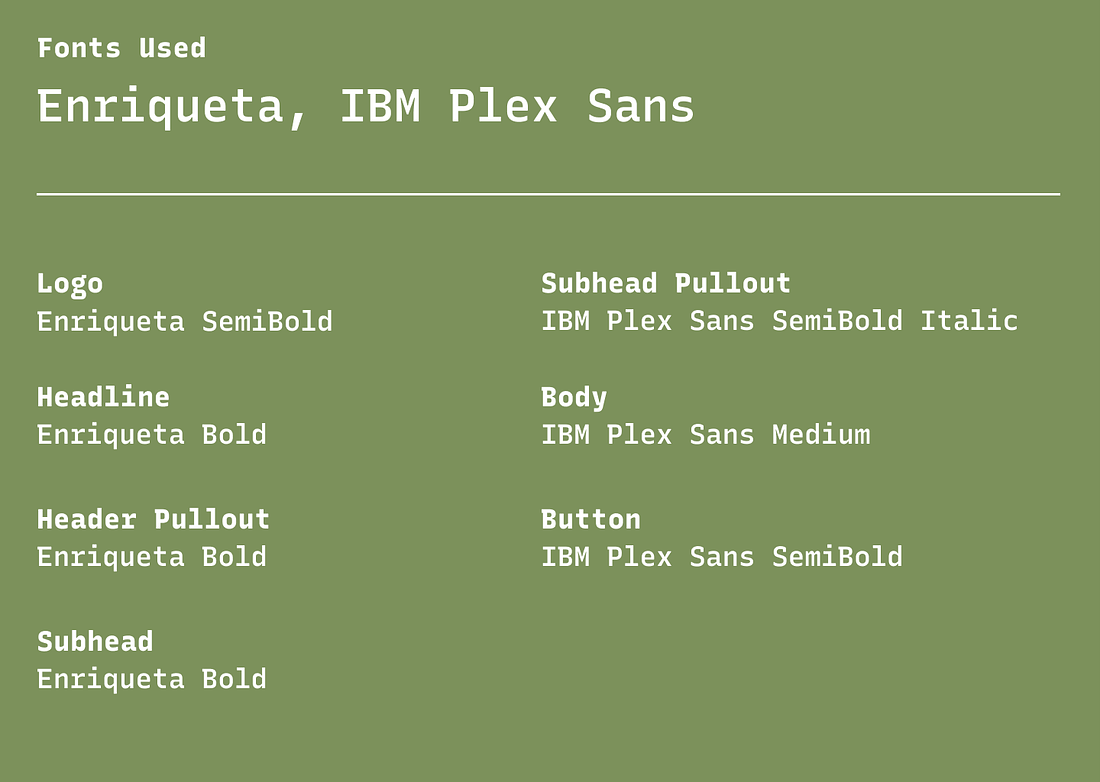
How to make this drink:
- Make the coffee using your favorite method.
- Add the coffee to a glass or mug, leaving about an inch at the top for the whipped cream. Stir in the gingerbread syrup.
- Gently float the whipped cream on top using the back of a spoon.
Here's the original recipe.
Cheerful fonts:
Fredoka One and Nunito:
- Logo font: Fredoka One Regular.
- Display font: Fredoka One.
- Body font: Nunito.
Gingerbread Martini is a drink full of holiday spirit. The roundness and boldness of Fredoka One, along with Nunito’s rounded caps, communicate a cheeriness that is perfect for this sweet, winter flavored drink.
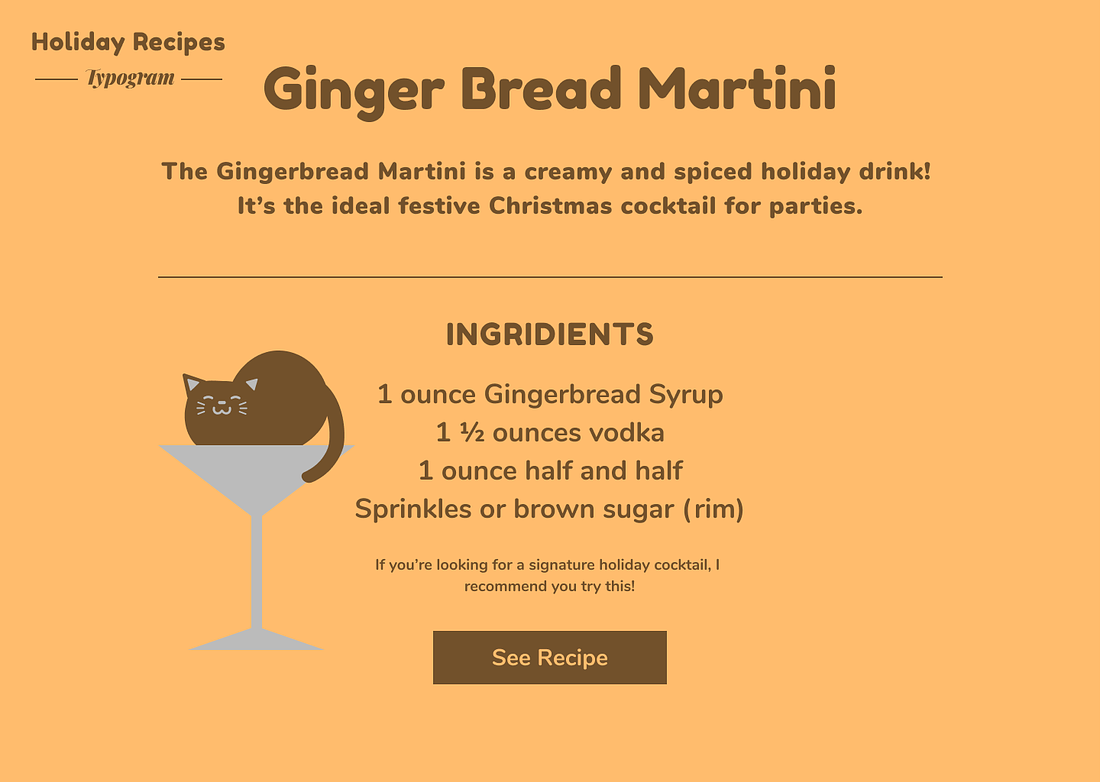
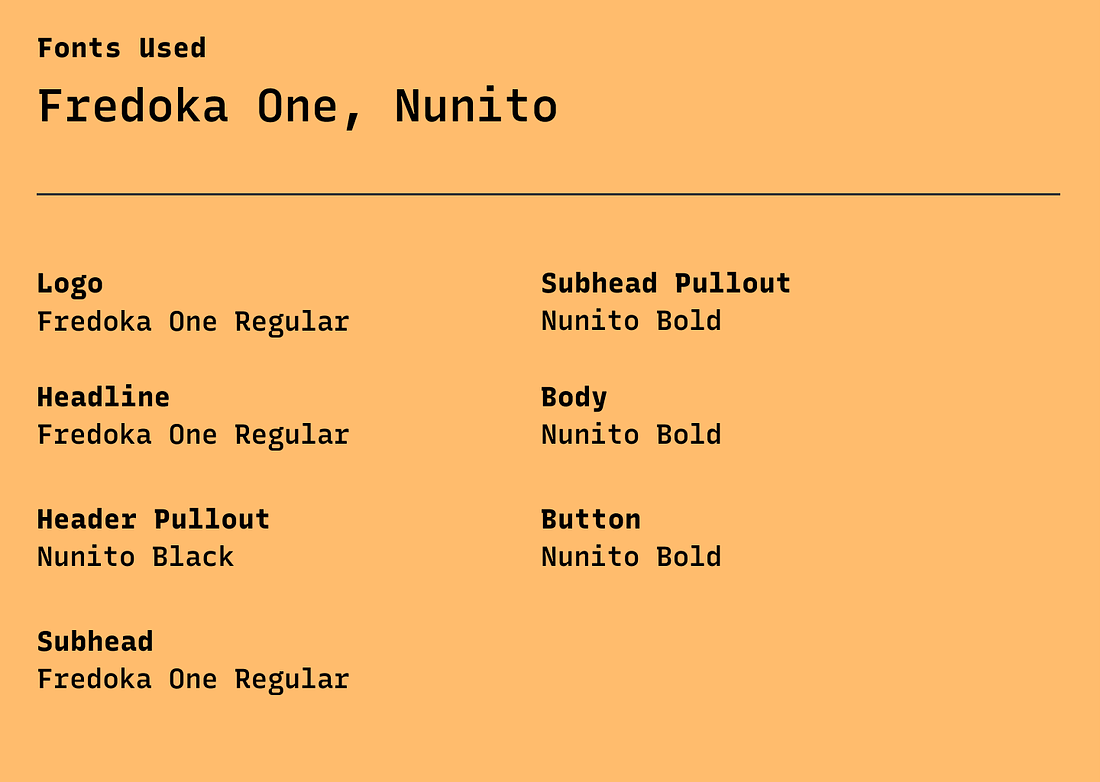
How to make this drink:
- Place the sprinkles or sugar on a plate. Wet the rim of the glass and roll it in the sprinkles or sugar until evenly coated.
- Place the gingerbread syrup, vodka, and half-and-half in a cocktail shaker. Add a handful of ice, and shake until cold. Strain the drink into the prepared martini glass.
Here's the original recipe.
That’s a wrap for our first font style book. Have a wonderful holiday!
Which font do you use most for your marketing materials? Let's chat!
Discuss this story, or subscribe to the Font Discovery for more.
🌐 Best Around the Web: Posts Submitted to Indie Hackers This Week

😔 I failed as an indie hacker for 12 years. Posted by Shashank.
🤷♀️ You can't create anything new anymore. Posted by Remy Oswalt.
📈 Let's grow together on Twitter. Posted by Matt Morris.
🧐 What are your resolutions for 2022? Posted by Himanshu Singh.
🖥 How to use Reddit to find users. Posted by Davis Baer.
🧘♂️ How do you stay focused? Posted by Jerry Alex.
Want a shout-out in next week's Best of Indie Hackers? Submit an article or link post on Indie Hackers whenever you come across something you think other indie hackers will enjoy.
📄 Jacob Engels Hit $2K MRR With Document Automation

from the Growth & Acquisition Channels newsletter
Jacob Engels cofounded Paperless, a document automation SaaS that recently hit $2K+ MRR. He sat down with Indie Hackers to share how Paperless has honed an awesome process using LinkedIn and email automation to bring in early users. Let's get started!
What's your background, and what are you working on?
Prior to joining Paperless, I started my own social media automation agency, Postingheld, which I still run today. Documents and contracts are the basis of any business, especially here in Germany. This is a huge market, but the small business segment is underserved. We found out that over 87% of businesses still use paper-heavy manual processes or PDFs, as opposed to digital tools. Existing solutions (like DocuSign) are focused on going upmarket, and are too complex. Our solution is keeping it simple, focusing on a great user experience, and prioritizing speed.
Back in 2020, at our previous startup (Mankido), we spent hours preparing proposals, collaborating on contracts, and chasing paperwork from our clients, staff, and external partners. This is wasted time that you can never get back. Frustrated and annoyed with the mess of legacy systems, paper, and PDFs, we decided to do something about it. Today, while we technically haven’t officially launched, hundreds of early access users and businesses are already using Paperless to work smarter, onboard new hires easier, close deals faster, and more.
What went into building the initial product?
Initially, we built the solution to scratch our own itch at Mankido, and in practice, we were our own first customer. We used (and still do use) our own API to integrate Paperless into our CRM and existing applications, and it’s such a game-changer for our own organization. After some of our clients complimented us on the great experience signing digital documents on their mobiles, we thought about the opportunity to take this to market. Later on in 2020, we finally did.
How have you attracted users and grown Paperless?
Our first channel was cold email outreach. We created a pretty incredible process of finding leads on LinkedIn, enriching data through a personal assistant, and then personalizing outreach at scale. We had open rates of up to 80% and reply rates of up to 45%. We also tested various industries and verticals to see where we could find the biggest traction. We were using the LinkedIn Sales Navigator to build solid lists of interesting contacts. Trying different batches of leads (company size and industry) helped us come up with around 30 different target groups that we were contacting.
Through Phantombuster, we were exporting those contacts into an Excel file. Our personal assistant later searched for email addresses with different tools such as Hunter, Rocketreach, Leadleaper, Name2email, SalesQl, Signal Hire, Snovio, and Clearbit. The final leads and email addresses were exported to Klenty, a sales automation tool. With simple A/B/C tests, we were able to determine which headlines and content prompted leads to answer our emails.
These four rules helped us achieve crazy high numbers:
- KISS: Keep it simple and stupid.
- Nail the tone: Don’t smell like a salesman or marketeer.
- Use a simple yes or no call-to-action (CTA).
- Follow up three times.
Since the signup was not yet ready, we were pushing hard to schedule 30 minute calls to generate insights and create urgency. In the call, it was all about asking the right questions.Initially, we let early access users into our platform in exchange for feedback. Some of them converted to paid customers. We’re still heavily focused on interviewing these early adopters to really nail our positioning, find product-market fit, and determine our best customers to focus on.
What's your business model?
As a SaaS, we charge $21-$27 per month, per user for our business plan, which includes all of our features, plus unlimited documents and templates. We’ll be pursuing a product-led go-to-market strategy, and plan to offer a 30 day free trial.
What would you do differently?
We’d focus on niching down even further, and really investing time into customer research and development. This part of any go-to-market strategy is absolutely essential. It’s about really understanding underserved needs and solving pain points. They say to build an Aspirin (painkiller), not a Vitamin (supplement), and I totally agree with this.
Discuss this story, or subscribe to Growth & Acquisition Channels for more.
🐦 The Tweetmaster's Pick

by Tweetmaster Flex
I post the tweets indie hackers share the most. Here's today's pick:

🏁 Enjoy This Newsletter?
Forward it to a friend, and let them know they can subscribe here.
Also, you can submit a section for us to include in a future newsletter.
Special thanks to Jay Avery for editing this issue, to Gabriella Federico for the illustrations, and to Darko, Priyanka Vazirani, and Hua Shu for contributing posts. —Channing


















